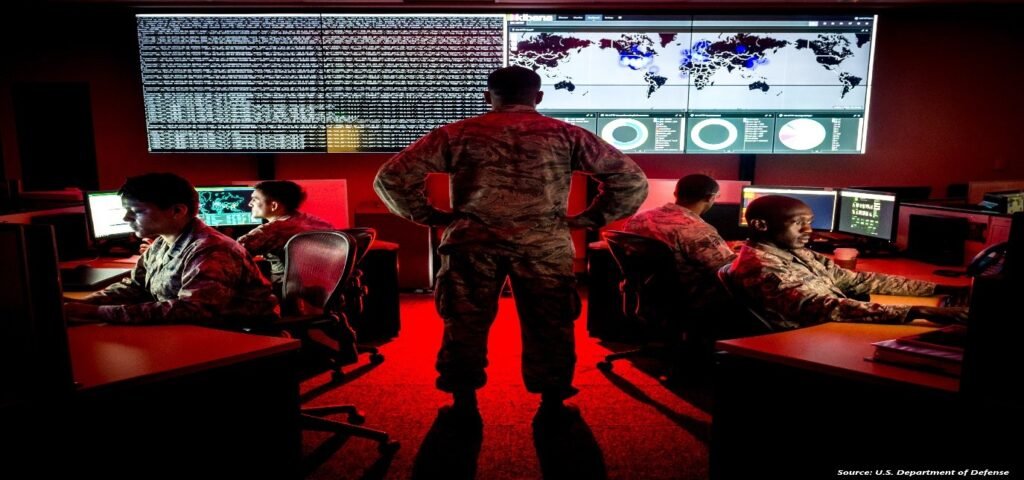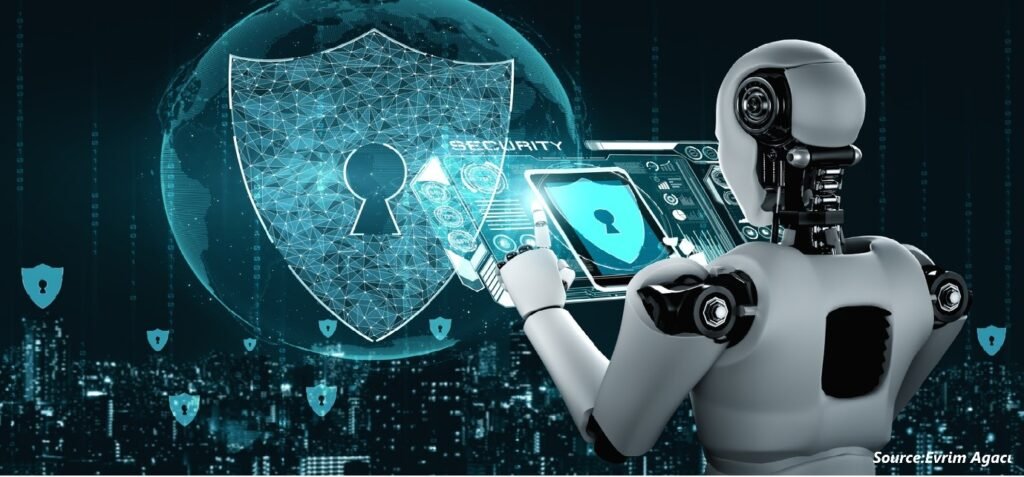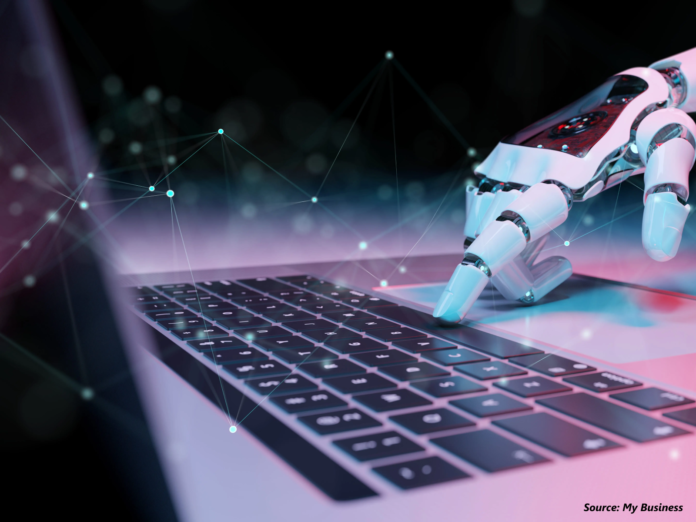Table of Contents
Introduction
During a period where the cyber-attacks are becoming sophisticated automation and artificial intelligence have emerged as major technologies to boost national cybersecurity. The defense sector in particular is dealing with evolving and persistent cyber threats from nation-state along with cybercrime syndicates and hacktivist collectives. Cybersecurity Ventures expects global cybercrime costs to grow by 15 percent per year till 2029. Traditional cybersecurity methods cannot help manage these threats effectively anymore. Artificial intelligence and automation are revolutionizing cyber threat detection, analysis, and response by the defense forces and guaranteeing national security in the digital battlefield.
Artificial intelligence-based cybersecurity technologies deliver real time threat detection and incident response through automation that lowers human error and enabling quicker decision-making. Automation enhances the efficiency of security operations, that enables defense agencies to prioritize high value threats instead of continuously monitoring threats. This blog covers the application of AI and automation in defense cybersecurity, referring to their advantages, applications, problems and potential future.
The Rising Cyber Threat Environment of National Defense
Cyber-attacks against defense agencies have become far more sophisticated, ranging from cyber espionage and ransomware attacks to advanced nation-state-sponsored advanced persistent threats. Military networks, critical infrastructure, and classified communications are the preferred targets of choice for attackers seeking to gain a strategic advantage. The speed and complexity of cyberattacks pose one of the greatest defense cybersecurity threats.
Threat detection is based on rules, the foundation of classical security systems, but is powerless to prevent constantly evolving cyber-attacks that continuously scan for new ways to get inside. Cybersecurity processes are tedious and prone to human mistake, so it is difficult for defense agencies to respond in real-time to threats. Another central concern is the lack of cybersecurity professionals in the defense sector. The increase in cyber breach requires monitoring and rapid response but many defense agencies have difficulty recruiting and retaining cybersecurity professionals. Artificial intelligence and automation address this issue by augmenting human capabilities by improving threat detection accuracy and enabling rapid response times.
How AI Improves Defense Cybersecurity
AI is revolutionizing defense cybersecurity through real time threat detection, automated incident response and predictive analytics. Artificial Intelligence systems search through huge amounts of data to identify anomalies, detect malicious activity and predict potential cyber threats before they occur.
Its arguably most significant contribution to the cyber security space has been threat detection based on behavior. While traditional signature-based security software relies on attack signatures learned, AI-powered security software takes advantage of machine learning algorithms’ capability in detecting unusual behavior and blocking zero-day malware. The learning algorithms are updated automatically by studying new attack patterns and formulating counter-measures, hence providing an effective shield against sophisticated cyber-attacks.

AI driven threat intelligence is also a crucial aspect of defense cybersecurity. By monitoring global cyber threat patterns AI can provide defense agencies with relevant intelligence enabling them to anticipate and counter cyberattacks in advance. AI driven threat intelligence platforms utilize natural language processing to scan cybersecurity alerts, social media activity and dark web discussions to identify potential threats before they occur.
Another significant application of AI in defense cyber security is deception. AI-deception technologies create fake assets, such as decoy networks and honey pots, meant to mislead the attackers and provide intelligence on their modus operandi. These deceptions enable defense organizations to detect and disassemble cyber threats without risking their actual systems.
The Application of Automation in Defense Cybersecurity
Automation is a revolution in defense cybersecurity allowing military and government agencies to efficiently manage cyber threats with little or no human intervention. Automated cybersecurity solutions reduce response times minimize human error and enhance the overall security stance of defense agencies. One of the most critical applications of defense automation in cybersecurity is automated threat response. As soon as a cyberattack is detected automated response tools are capable of automatically containing affected systems blocking malicious traffic and initiating remediation processes without any human intervention. This feature of instant response is critical in preventing the spread of cyberattacks and minimizing damage. Automated vulnerability management is another significant benefit of cybersecurity automation. The defense organizations have sophisticated IT infrastructures consisting of thousands of devices, and it is hard to detect and patch vulnerabilities by hand. Automated vulnerability scanning tools are always scanning military networks for security vulnerabilities, prioritizing risks and patching them to avoid exploitation by foes. Defense agencies must stick to accurate cybersecurity standards and compliance processes including the National Institute of Standards and Technology guidelines and the Cybersecurity Maturity Model Certification.
Automated compliance systems guarantee that policies are always respected preventing a compliance violation. Traditional Security Operations Centers rely on human analysts to monitor network traffic and respond to security alerts. But with the rising number of cyber threats manual monitoring is not an option anymore. Automated SOCs use AI powered analytics to detect anomalies, correlate security incidents and provide real time notifications that is significantly boosting the effectiveness of cybersecurity operations.
Issues in the Deployment of AI and Automation in Defense Cybersecurity
Although artificial intelligence and automation offer immense value in defense cybersecurity their implementation involves some issues. One of the primary problems is adversarial AI where cyber attackers make use of AI to avoid detection, manipulate AI algorithms and conduct sophisticated attacks. Cyberattacks based on AI such as deepfake phishing and AI generated malware, pose new problems for defense organizations. Another challenge is the legal and ethical implications of AI-based cybersecurity. The use of AI for military cyber operations makes accountability and decision-making in automatic cyber defense more complicated. A promise that AI systems operate within lawful and ethical boundaries is required to prevent unintended consequences.
Data privacy and data security are also at the forefront when using AI in cybersecurity. AI-based detection of threats depends on processing voluminous amounts of data, even classified military information. Protecting AI systems to ensure that they are not under cyberattack target is of high importance to keep national security intact. Apart from this, the cost and intellect of AI and automation deployment are daunting challenges for defense agencies. Developing and maintaining AI driven cybersecurity systems require monumental investment in research, infrastructure and highly trained staff. It requires strong partnerships among defense agencies, technology companies, as well as cybersecurity experts to cross these obstacles.
The Future of AI and Automation in Defense Cybersecurity
Defense cybersecurity in the future will be more influenced by automation and AI. New technologies including edge computing, quantum computing and 5G networks will give rise to new cybersecurity threats enhancing the importance of AI driven security solutions. AI based cybersecurity will move even further ahead, with emerging applications including autonomous threat detection, self-healing networks, and AI-based cybersecurity simulations.

Future AI will be capable of anticipating cyberattacks more precisely, enabling defense agencies to adopt an active security posture. The integration of blockchain technology and AI is also expected to enhance defense cybersecurity. Security systems based on blockchain will provide tamper-proof logs of cyber-attacks and ensure data integrity of military communications. Additionally, automation and AI will be used to develop cyber warfare capabilities. Cyber defense planning will involve AI-based offensive and defensive operations, allowing countries to defend against cyber-attacks more effectively. AI-powered cyber defense systems and autonomous cybersecurity drones will be critical part of the military cybersecurity efforts.
Conclusion
Artificial intelligence and automation are revolutionizing defense cybersecurity through enhanced threat detection along with automating security processes and boosting cyber resilience. As cyber threats become more advanced the adoption of AI driven cybersecurity solutions will be essential in safeguarding national security. Despite challenges such as ethics and implementation cost the benefits of AI and automation in defense cybersecurity far exceed the drawbacks.
Governments and defense firms must continue to invest in AI based cybersecurity technologies strengthen public private partnerships and develop ethical guidelines for AI based cyber defense. The defense cybersecurity future is in the utilization of AI and automation to establish a more secure, adaptive, and resilient national defense infrastructure.
Apart from that if you want to know about “Role of AI and ML in Revolutionising Military Computer Industry” then please visit our “Technology” Category.
ABOUT THE AUTHOR

Mrinal Deb is a dedicated and enthusiastic researcher with two years of experience. He has closely monitored several industries, such as Tech, ICT & Media, Travel, Robotics, and Electric Vehicles. He offers valuable perspectives and analysis and enjoys sharing his insights through article writing and blogging. Outside of his professional pursuits he enjoys reading and staying informed about industry developments. The author can be reached at info@nextmsc.com



























